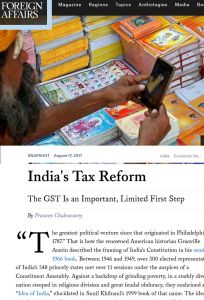加入 getAbstract 阅读摘要

加入 getAbstract 阅读摘要
Praveen Chakravarty
India's Tax Reform
The GST Is an Important, Limited First Step
Foreign Affairs, 2017
看看什么内容?
India’s new tax regime is ill-suited to the country’s vast regional disparities.
自动生成的音频
1×
登录 收听有声浓缩书。
自动生成的音频
Recommendation
In a historic tax overhaul, India seeks to standardize tax rates for the first time across the country’s 36 states and territories. From afar, India’s motto of “one nation, one tax” makes a lot of economic sense. But as political economist Praveen Chakravarty writes in Foreign Affairs, the new tax code in its current form isn’t sustainable, considering the country’s political, demographic, social and economic realities.
Summary
About the Author
Praveen Chakravarty is a senior fellow at the IDFC Institute, a think tank in Mumbai.


















Comment on this summary